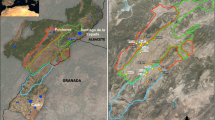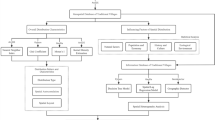Abstract
Archaeologists all over the world face problems regarding complexity and disorganization. Whether surveying, excavating, or doing laboratory analysis, the nature of the evidence of prehistoric societies is fragmented and incomplete. On a global and very general basis, the older the site, the greater the fragmentation, the more the missing data, and the greater the disorganization that the archaeologist must navigate to understand the past. Of course, there are notable exceptions. Most archaeologists consider the topic from the specificity of a particular time, a particular place, and a particular society. In this paper, it is considered in its most non-particular and general format. In order to do so, the paper creates an artificial archaeological region that is surveyed and excavated to a greater and lesser extent and analyzed with a variety of statistical and graphic evaluations. It concludes that when all other things are equal, increasing fragmentation causes far more disorganization and increases complexity than does missing data. Thus, fragmentation is a far more important problem for archaeological interpretation than relatively small amounts of missing data.



















Similar content being viewed by others
References
Allison, P. D. (2001). Missing data, in Quantitative Applications in the Social Sciences (p. 104). Sage publications.
Beals, A. R. (2002). Anthropology made new: Writing against and without culture. Reviews in Anthropology, 31(3), 213–229.
Cooper, R. (2016). In G. B. M. Parker (Ed.), Organization/disorganization. For Robert Cooper: Collected Work (pp. 87–123). Routledge.
Kosso, P. (2001). Knowing the past: Philosophical issues of history and archaeology. Humanity Books. Amherst NY.
Leech, O. (2016). Shreds and patches. Lyme Press.
Little, R. J. A., & Rubin, D. B. (2020). Statistical analysis with missing data. Wiley series in probability and statistics. Hoboken.
Lloyd, S. (2001). Measures of complexity: a nonexhaustive list. IEEE Control Systems Magazine, 21(4), 7–8.
Manson, S. M. (2001). Simplifying complexity: a review of complexity theory. Geoforum, 32(3), 405–414.
Singh, M. A. W. G. (2022). Finite volume approach for fragmentation equation and its mathematical analysis. Numerical Algorithms, 89(2), 465–486.
Author information
Authors and Affiliations
Corresponding author
Ethics declarations
Competing Interests
The author declares no competing interests.
Additional information
Publisher’s Note
Springer Nature remains neutral with regard to jurisdictional claims in published maps and institutional affiliations.
Rights and permissions
Springer Nature or its licensor (e.g. a society or other partner) holds exclusive rights to this article under a publishing agreement with the author(s) or other rightsholder(s); author self-archiving of the accepted manuscript version of this article is solely governed by the terms of such publishing agreement and applicable law.
About this article
Cite this article
Zubrow, E. A Prolegomenon on Archaeological Complexity and Disorganization: Fragmentation and Missing Data. J Archaeol Method Theory 31, 689–706 (2024). https://doi.org/10.1007/s10816-023-09636-3
Accepted:
Published:
Issue Date:
DOI: https://doi.org/10.1007/s10816-023-09636-3




